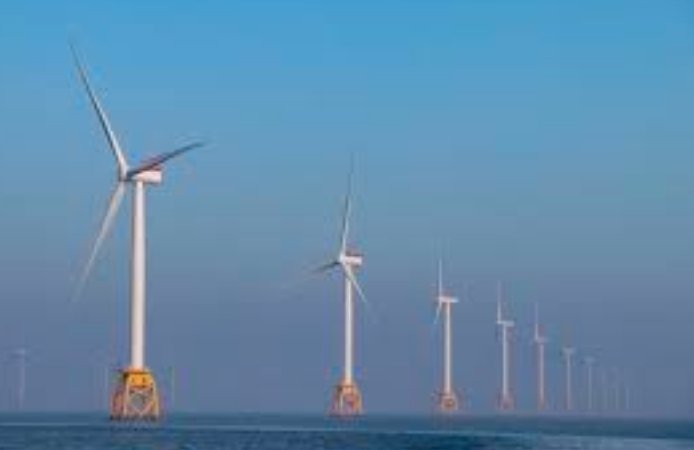The Scottish Government has officially approved SSE’s Berwick Bank offshore wind project—an enormous step that could soon make the UK home to the largest wind farm on Earth.
With the last major consent now secured, the project is inching closer to becoming reality. But it’s not a done deal just yet. SSE still has to win a power contract and make its final investment decision. Still, this marks the most significant progress in over a decade of planning—and positions the UK for a potential leap in global renewable energy leadership.
A Decade-Long Dream Moves Closer to Reality
This isn’t some overnight win. The Berwick Bank project has been quietly evolving behind the scenes for more than ten years.
Now, with the Scottish Government’s green light, all eyes are on what happens next. If fully developed, the wind farm could supply enough electricity for 6 million homes—about 17% of the UK’s total household needs. That’s twice the number of homes in Scotland.
SSE says the Berwick Bank farm would stretch across an area of the North Sea larger than Edinburgh, covering over 1,000 square kilometers. The capacity? A staggering 4.1 gigawatts.
This approval is what industry types might call a “milestone,” but to many in the sector, it’s more like the last big gate before the sprint.

Power Contracts, Timelines, and Waiting Games
The government greenlight doesn’t mean shovels hit dirt (or ocean) tomorrow.
The next key step is landing a Contract for Difference (CfD)—the UK’s flagship power subsidy scheme. SSE is expected to bid in the upcoming auction round in September 2025. That auction is crucial: without winning a CfD, the economics of the project likely won’t work.
So yes, the pressure’s on.
Then there’s the final investment decision (FID). SSE will need to crunch numbers, evaluate risks, and figure out whether the project’s economics hold water—literally and figuratively.
One person familiar with the project summed it up this way: “Planning is the hard part, but funding is the fragile part.”
Political Winds Are Blowing Strongly—Well, Mostly
There’s been no shortage of political commentary around Berwick Bank—some of it enthusiastic, some of it… not so much.
Prime Minister Keir Starmer is fully behind the project. His government aims to hit 50 GW of offshore wind capacity by 2030. That’s part of a bigger plan to move the UK toward net-zero emissions by 2050.
They even sweetened the financial pot in 2024 for renewable energy developers, and more changes are expected this autumn. Starmer has called offshore wind the “backbone of Britain’s future energy system.”
Not everyone’s clapping, though.
Former U.S. President Donald Trump, during his recent visit to Scotland, told reporters: “Stop the windmills.” He went on to complain that they’re “ruining your oceans” and “killing your birds.” The comment reignited debate—especially since Trump has long opposed wind turbines near his Scottish golf resort.
One sentence.
The irony wasn’t lost on critics.
What’s at Stake: Money, Jobs, and Global Energy Status
For the UK, the stakes aren’t just environmental—they’re economic and geopolitical too.
Here’s what Berwick Bank could mean:
-
£8 billion in potential investment over the project’s lifespan
-
Thousands of jobs during construction and maintenance phases
-
Huge export potential in offshore wind know-how and equipment
If built, Berwick Bank wouldn’t just be a climate win. It’d be a symbol of British green engineering. It could also help offset the country’s reliance on imported fossil fuels, which have caused major price spikes in recent years.
Take a look at how it stacks up globally:
| Wind Farm | Capacity (GW) | Country | Status |
|---|---|---|---|
| Berwick Bank (SSE) | 4.1 | UK (Scotland) | Approved (2025) |
| Dogger Bank | 3.6 | UK | Under construction |
| Jiuquan Wind Base | 2.0 | China | Operational |
| Hornsea 2 | 1.3 | UK | Operational |
That table says a lot. Berwick Bank isn’t just big—it’s on track to dwarf existing giants.
Environmental Concerns Still Swirl
With size comes scrutiny, and Berwick Bank is no exception.
Environmental groups have raised questions about how the project might affect marine wildlife, particularly birds and marine mammals. SSE says it’s worked with regulators and experts for years to assess the impact.
The company’s environmental impact assessment includes mitigation measures like adjusting turbine layouts and creating buffer zones.
Still, concerns linger. The Royal Society for the Protection of Birds (RSPB) has expressed caution, urging tighter safeguards to protect Scotland’s internationally important seabird populations.
One paragraph.
And no, Trump’s “killing your birds” line doesn’t quite count as science.
Offshore Wind: From Hype to Backbone
The Berwick Bank project is part of a bigger story. Offshore wind isn’t just a buzzword anymore. It’s central to the UK’s energy strategy.
In 2024 alone, offshore wind generated around 22% of the UK’s electricity, up from 13% five years earlier. That number’s only going up.
The National Grid says the UK could get more than half of its electricity from offshore wind by 2040. But it won’t be smooth sailing. Grid upgrades, port infrastructure, and supply chain constraints remain big hurdles.
And there’s still public skepticism in rural and coastal areas. People are asking whether local jobs will really materialize, or whether the profits just head straight back to London—or worse, overseas.
Still, the tone has shifted. What used to feel like “the future” now feels like “the plan.


















